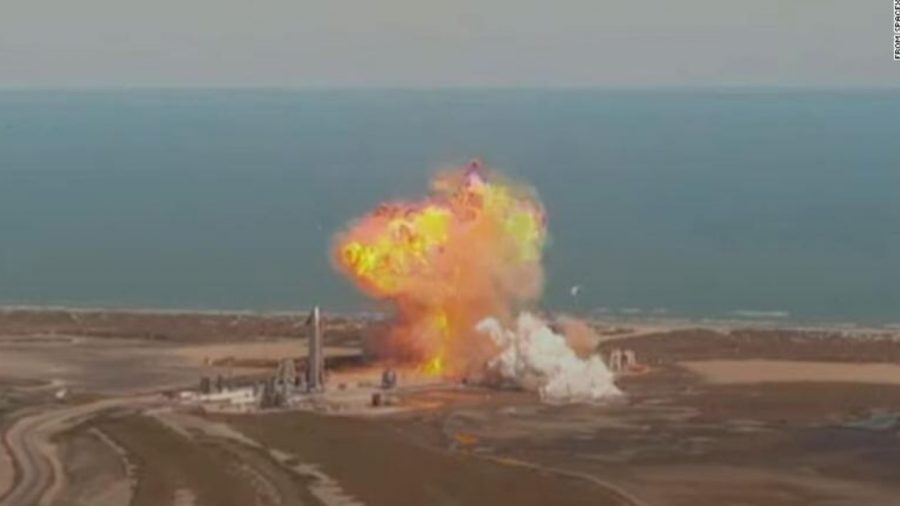One Giant Setback for Mankind: Second SpaceX Rocket Crashes and Burns
February 3, 2021
Two months ago, SpaceX launched a new prototype rocket, which crashed and burned six minutes after launch. On Tuesday, SpaceX tried again with another prototype. This self-guided rocket was launched from Boca Chica, Texas, and successfully completed its entire launch. The rocket made it to the desired height of six miles off the ground and even turned around in mid-air successfully. From this point, the rocket was supposed to fly parallel to the ground in order to make landing easier. Then, after a short descend, the rocket would turn upright and land. However, instead of going according to plan, the rocket over-rotated and crashed nose-first into the ground.
This launch had been having problems since stage one. On January 28th, SpaceX had this prototype ready to launch and had even begun fueling the rocket. However, SpaceX did not have permission from the Federal Aviation Administration (FAA) to conduct the launch. This situation led to the launch being cancelled, which put Musk in even more hot water with the FAA after previously launching his previous rocket in December without their approval. On Twitter, Musk claimed that these regulations were “meant for a handful of expendable launches per year from a few government facilities. Under those rules, humanity will never get to Mars.” However, Musk did receive permission from the FAA on Tuesday, so the launch was able to occur.
Later this year, SpaceX is planning to launch its first civilian space expedition. This launch is also a fundraiser for St. Jude’s, and you can even win tickets to ride by going to the Saint Jude’s website (if you are 18 or older). SpaceX’s ultimate goal is to send a small number of astronauts to Mars. Even though this test was a failure, both Elon Musk and the launch commentator for SpaceX seemed confident that this problem will be solved quickly, sparking hope that we will soon be on our way to reaching Mars.

